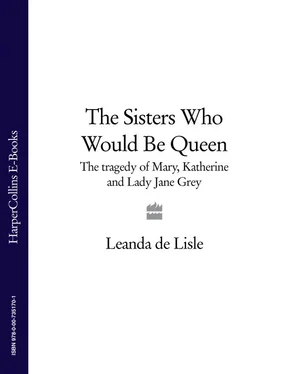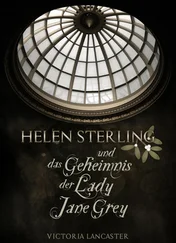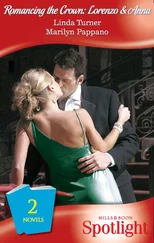From Harry’s perspective, however, the marriage to Frances - concluded sometime between 28th July 1533 and 4th February 1534 - also carried political and material advantages to his family. 6 His grandfather, the 1st Marquess, may have been Henry VII’s brother-in-law, but by marrying a princess of the blood he would be doing even better; and the fact he had only the previous year refused the daughter of the Earl of Arundel may be an early mark of his ambition. Through Frances, any children they had would be linked by blood to all the power and spiritual mystery of the crown. It was an asset of incalculable worth - though it would carry a terrible price.
Over three years later, it was sometime before the end of May, 1537, that Frances’s child was to be born. 7 Harry Grey of Dorset was in London and Frances would surely have been with him at Dorset House, on the Strand. 8 It was one of a number of large properties built by the nobility close to the new royal palace of Whitehall. There was a paved street behind and, in front - where the house had its grandest aspect - there was a garden down to the river with a watergate on to the Thames. Travelling by boat in London was easier than navigating the narrow streets and foreigners often commented on the beauty of the river. Swans swam amongst the great barges while pennants flew from the pretty gilded cupolas of the Tower. But there were also many grim sights on the river that spring. London Bridge was festooned with the decapitated heads of the leaders of the recent rebellion in the north, the Pilgrimage of Grace: men who had fought for the faith of their ancestors and the right of the Princess Mary to inherit her father’s crown. For all Henry’s concerns about the decorum of female rule, the majority of his ordinary subjects had little objection to the concept. That women were inferior as a sex was regarded as indisputable, but there was room for exceptions. The English were famous in Europe for their devotion to the Virgin Mary, the second Eve, born without the taint of the first sin, and who reigned as Queen of Heaven. It did not seem, to them, a huge leap to accept a Queen on Earth. Just as the Princess Mary’s rights were under attack, however, so were their religious beliefs and traditions.
When the Pope had refused to annul Henry’s marriage to Catherine of Aragon, he had broken with Rome and the Pope’s right of intervention on spiritual affairs in England had been abolished by an act of Parliament on 7th April 1533. With the benefit of hindsight this was a definitive moment in the history of the English-speaking world, but at the time most people had seen these events as no more than moves in a political game. Matters of jurisdiction between King and Pope were not things with which ordinary people concerned themselves, and the aspects of traditional belief that first came under attack were often controversial ones. Long before Henry’s reformation in religion there had been debate for reform within the Catholic Church, inspired in particular by the so-called Humanists. They were fascinated by the rediscovered ancient texts of Greece and Rome, and in recent decades Western academics had, for the first time, learnt Greek as well as Latin. This allowed them to read earlier versions of the Bible than the medieval Latin translations, and to make new translations. As a change in meaning to a few words could question centuries of religious teaching so a new importance came to be placed on historical accuracy and authenticity. Questions were raised about such traditions as the cult of relics, and the shrines to local saints whose origins may have lain with the pagan Gods. It was only in 1535 when two leading Humanists, Henry’s former Lord Chancellor, Thomas More, and the Bishop of Rochester, John Fisher, went to the block rather than accept the King’s claimed ‘royal supremacy’ over religious affairs, that people began to realise there was more to Henry’s reformation than political argument and an attempt to reform religious abuses. And even then many did not waver in their Catholic faith. These ‘Henrician’ Catholics included among their number the chief ideologue of the ‘royal supremacy’, the Bishop of Winchester, Stephen Gardiner. For the bishop, as for the King, papal jurisdiction, the abolished shrines, pilgrimages, and monasteries, were not intrinsic to Catholic beliefs. 9 The Holy Sacraments, such as the Mass, remained inviolate and they argued that although the English Church was in schism in the sense that it had separated from Rome, it was not heretical and in opposition to it. 10
Those who disagreed, and opposed Henry’s reformation, felt his tyranny to full effect, as the heads displayed at London Bridge and other public sites bore silent witness. One hundred and forty-four rebels from the Pilgrimage of Grace were dismembered and their body parts put on show in the north and around the capital. Even if Londoners avoided the terrible spectacle of these remains, they would not miss the other physical evidence of the King’s reformation. Everywhere the great religious buildings, that had played a central role in London life, were being destroyed or adapted to secular use. Only that month, the monks from the London Charterhouse who had refused to sign an oath to the royal supremacy, were taken to Newgate prison, where they would starve to death in chains.
Inside Frances’s specially prepared chamber at Dorset House, however, the sights, sounds and horrors of the outside world were all shut out. She was surrounded only with the women who would help deliver her baby. When the first intense ache of labour came it was a familiar one. Frances had already lost at least one child, a son who died in infancy, as so many Tudor children did. Nothing is recorded of his short life save his name: Henry, Lord Harington. 11 Contemporary sources focus instead on the children born to Anne Boleyn: her daughter, Elizabeth, born on 7th September 1533, at whose christening Dorset had borne the gilded salt; * and the miscarriages that had followed - the little deaths that had marked the way to Boleyn’s own, executed on trumped-up charges of adultery on 19th May 1536. The King’s second marriage was annulled and an act of Parliament had since declared both the King’s daughters, Elizabeth and Mary, illegitimate and incapable of succession. 12 This raised in importance the heirs of the King’s sisters in the line of succession, and both King and kingdom had already shown sensitivity to the implications. The rebels of the Pilgrimage of Grace had expressed their fear that England would pass on Henry’s death to the foreigner, James V of Scots, the son of his elder sister, Margaret. Meanwhile her daughter by a second marriage to the Earl of Angus, Lady Margaret Douglas, a favourite of the English court, was currently in prison for having become betrothed without the King’s permission. Her lover, Anne Boleyn’s uncle, Thomas Howard, would die in the Tower that October. But while Frances’s child would, inevitably, hold an important place within the royal family, the King remained determined his own line would succeed him. The pressure on her to produce a male heir was therefore of a different order to Henry’s wives. Dorset wanted a son, as all noblemen did, but he and Frances were still young and, when a girl was born, their relief that she was strong and healthy would have outweighed any disappointment in her sex.
A servant carried the newborn child immediately to a nearby room and handed her to a nurse. It was usual for fathers to be at hand when their children were born and Dorset would have been one of the first to visit the dimly lit nursery where his daughter was being fed and bound in swaddling, to keep her limbs straight and prevent her from scratching her face. Her spiritual welfare was of still greater concern to her parents and her christening was arranged as soon as possible, though this meant Frances could not attend. New mothers were expected to remain in bed for up to a month, and some did not even sit up for a fortnight. Frances played a role, however, in helping choose as her daughter’s godmother, the King’s new wife, Jane Seymour, after whom the little girl was named. 13
Читать дальше












